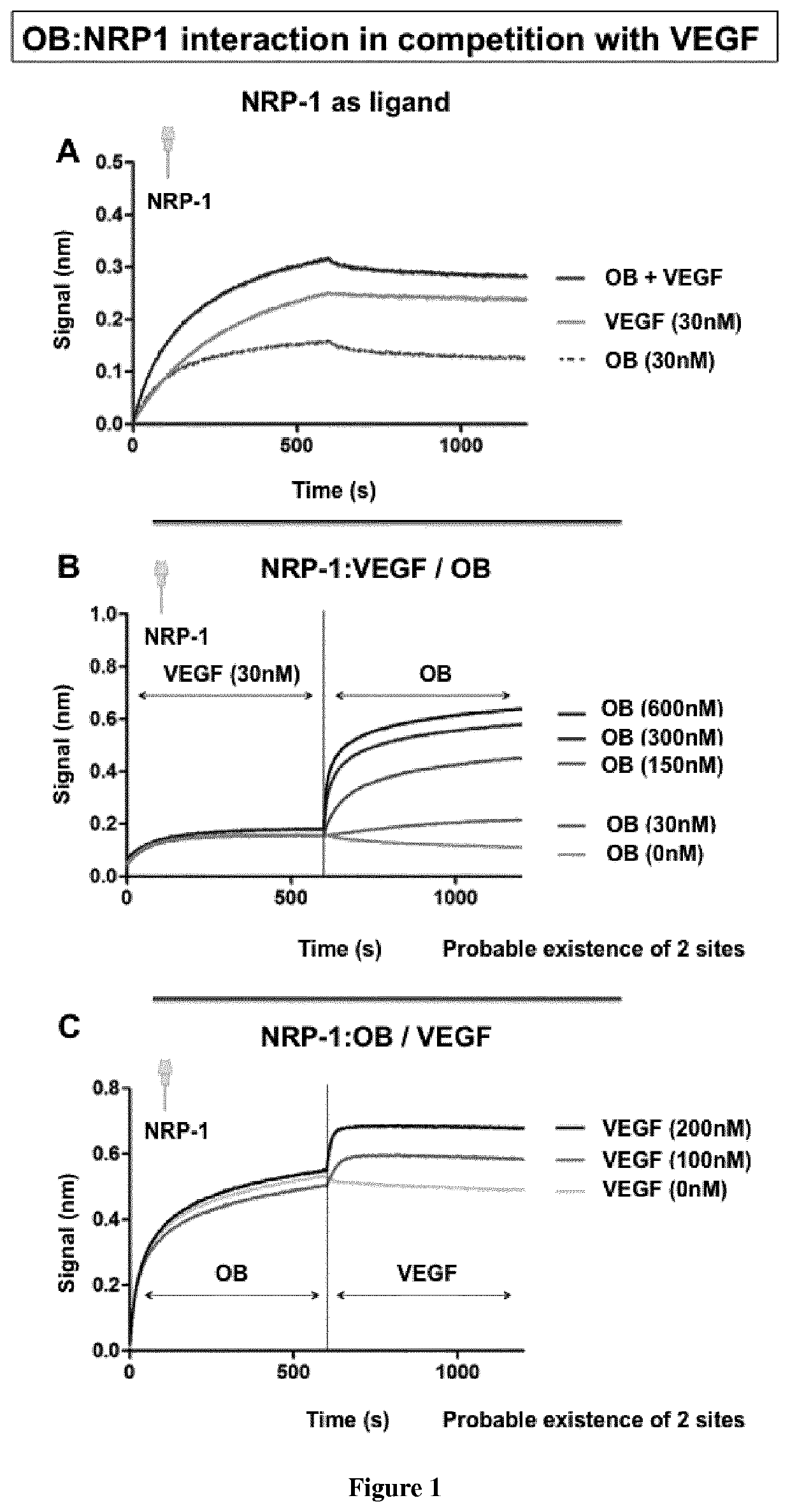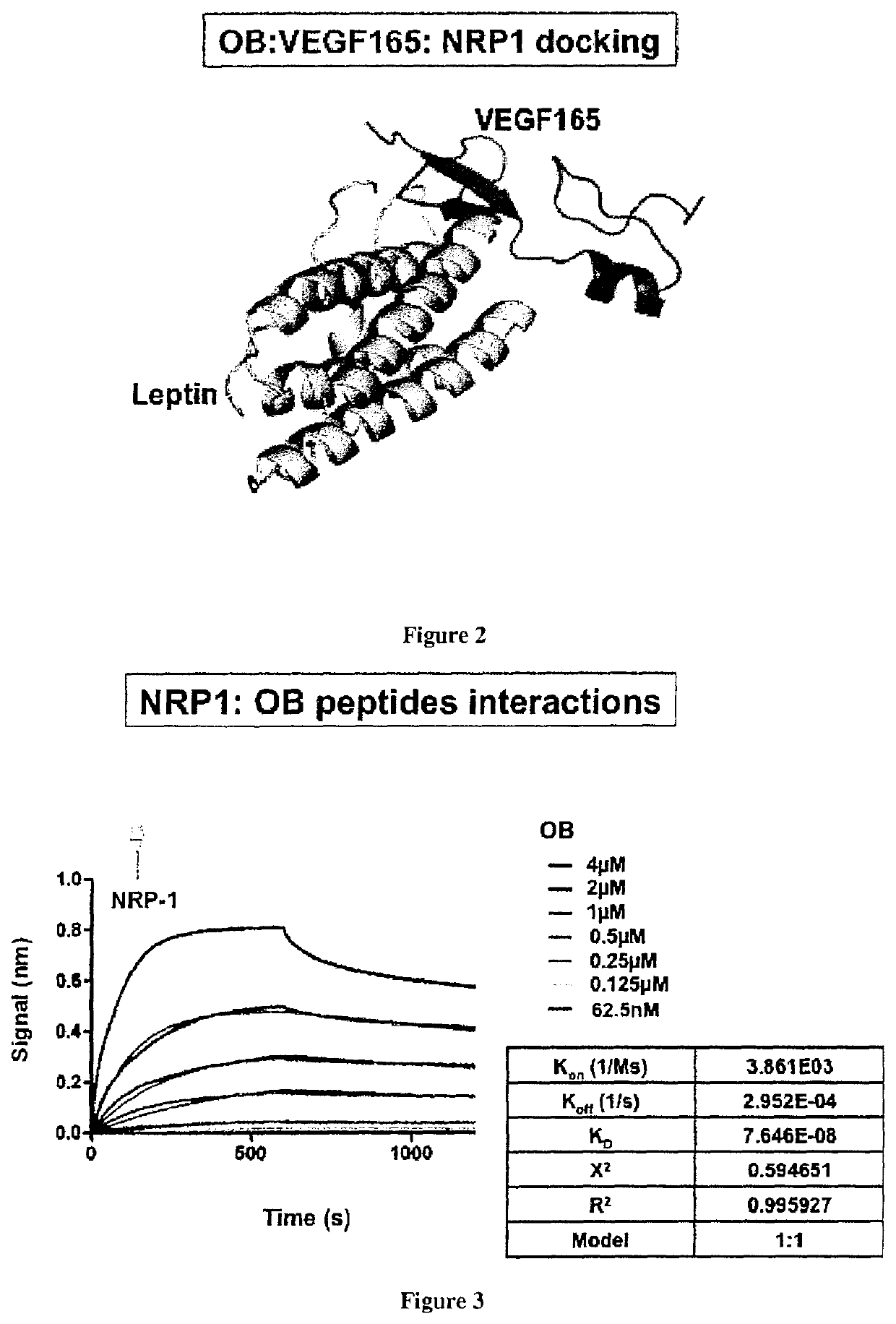Polypeptides capable of inhibiting the binding between leptin and Neuropilin-1
a technology of leptin and neuropilin, which is applied in the field of polypeptides, can solve the problems of vegf not preventing the binding of leptin to nrp-1, severe obesity, and decreased overall survival
- Summary
- Abstract
- Description
- Claims
- Application Information
AI Technical Summary
Benefits of technology
Problems solved by technology
Method used
Image
Examples
example
[0070]Material & Methods
[0071]Bio-Layer Interferometry
[0072]Bio-layer interferometry (BLI) is a label-free technique that is sensitive to an increase of mass bound to the biosensor enabling protein-protein interaction characterization.
[0073]Ligands preparation: proteins were incubated in a PBS buffer with a 1:3 ratio molar ratio of biotin (biotin-PEG4-NHS from Pierce EZ kit, prepared following the manufacturer's instructions). Free biotin was removed using a desalting column (Pierce). The biotinylated protein (called ligand) was immobilized onto streptavidin biosensor tips and dipped into wells containing the buffer with the analyte of interest (association) or without (dissociation).
[0074]Experimental conditions were as follow: total volume in each well: 200 μl; shake speed: 1,000 rpm. For simple protein:protein interactions an association phase was followed by a dissociation phase. For competition experiments, the association phase was followed by another association phase with a ...
PUM
| Property | Measurement | Unit |
|---|---|---|
| concentration | aaaaa | aaaaa |
| nucleic acid | aaaaa | aaaaa |
| affinity | aaaaa | aaaaa |
Abstract
Description
Claims
Application Information
 Login to View More
Login to View More - R&D
- Intellectual Property
- Life Sciences
- Materials
- Tech Scout
- Unparalleled Data Quality
- Higher Quality Content
- 60% Fewer Hallucinations
Browse by: Latest US Patents, China's latest patents, Technical Efficacy Thesaurus, Application Domain, Technology Topic, Popular Technical Reports.
© 2025 PatSnap. All rights reserved.Legal|Privacy policy|Modern Slavery Act Transparency Statement|Sitemap|About US| Contact US: help@patsnap.com



